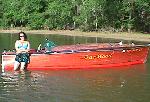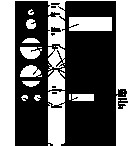Ok. We're pretty much familiar with the nomenclature JBL uses to identify impedance of it's various drivers, 'G' equals 4 ohms, 'H' equals 8 oms, 'J' equals 16 ohms. Once upon a time they used 'A', 'B', etc.
- Did they ever use the letter 'I' for anything, since it's between 'H' and 'J'?
- Have any 'K' (32 ohm) ohm products ever been produced?
- Why the switch from 'A', 'B', to 'H', 'J'?
Regards,
Charley



 Reply With Quote
Reply With Quote



 No flames guys! But I do know the 8th letter thing is accurate.
No flames guys! But I do know the 8th letter thing is accurate.









 ??
??
